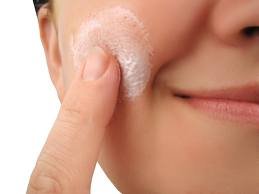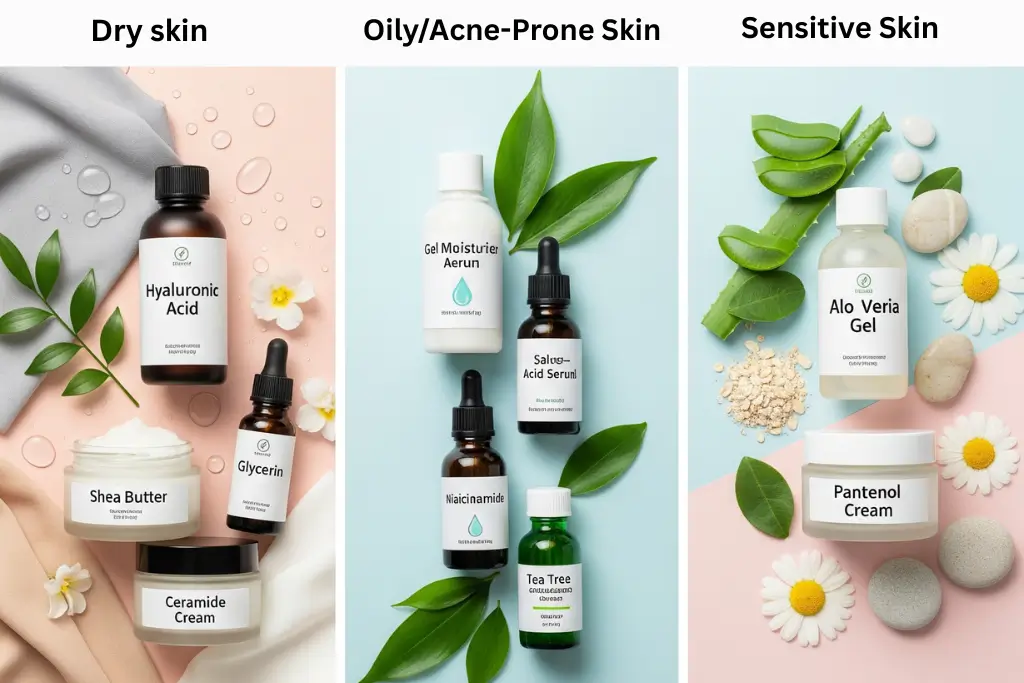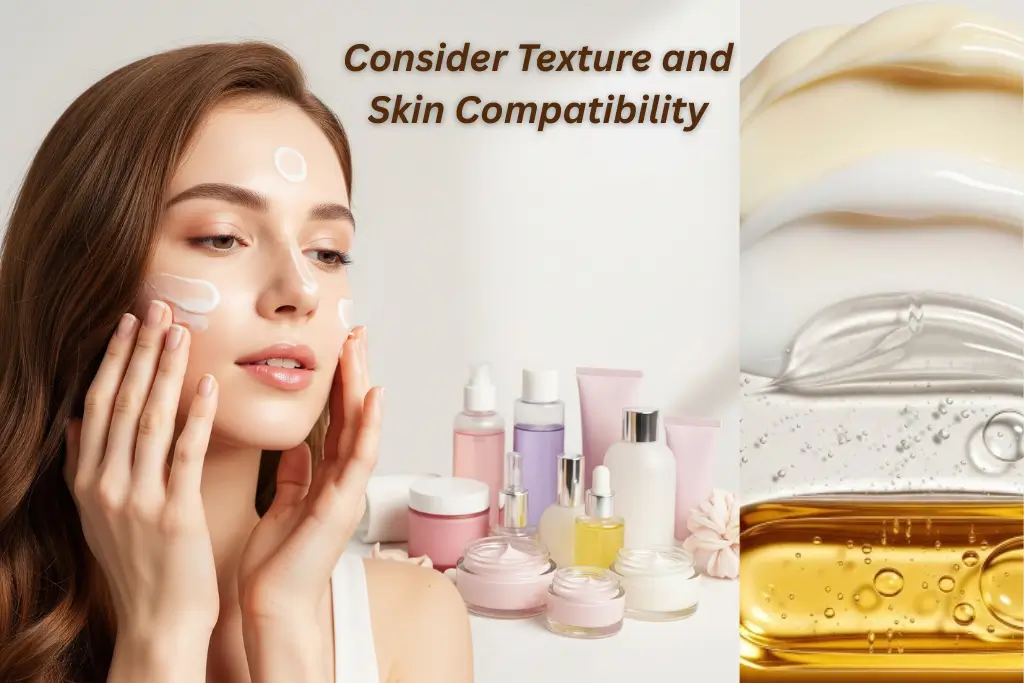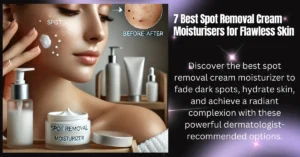Introduction:

Face moisturiser is an essential product in every skincare routine. Whether your skin is dry, oily, sensitive, or combination, choosing the right face moisturiser can help you maintain a smooth, balanced, and radiant complexion. With so many options available in the market, it’s easy to feel overwhelmed. To help you make an informed choice, here are the most important criteria to consider when selecting a face moisturiser.
1. Check the Ingredients
The ingredients of a face moisturiser determine how well it performs on your skin. Every skin type reacts differently, so understanding what works for your skin is key.

For Dry Skin:
Look for deeply hydrating ingredients such as:
- Hyaluronic acid retains moisture and plumps the skin.
- Glycerin attracts water to the skin.
- Shea butter and ceramides help repair the skin barrier.
For Oily or Acne-Prone Skin:
Choose oil-free or lightweight gel-based moisturisers with:
- Salicylic acid – gently exfoliates and unclogs pores.
- Niacinamide regulates sebum production and improves skin texture.
- Tea tree oil reduces acne-causing bacteria.
For Sensitive Skin:
Opt for gentle, fragrance-free moisturisers containing:
- Aloe vera soothes inflammation.
- Colloidal oatmeal calms irritation.
- Panthenol (Vitamin B5) – promotes healing.
Knowing your skin type and reading the label can guide you toward the right face moisturiser for your needs.
2. Look for Additional Benefits
A good face moisturiser does more than just hydrate—it should also support other skin goals.
Common Extra Benefits:
- SPF Protection – Many face moisturisers come with sun protection (SPF 15 or higher) to guard against UV damage.
- Anti-aging Properties – Ingredients like retinol, peptides, and vitamin C help reduce fine lines and promote youthful skin.
- Brightening Effects – Some moisturisers include licorice root, niacinamide, or arbutin to help even skin tone and reduce dark spots.
A face moisturiser with multi-functional benefits can simplify your skincare routine while addressing various concerns.
3. Consider Texture and Skin Compatibility
The texture of a face moisturiser plays a role in how comfortable it feels on the skin and how well it absorbs.

- Creams are thicker and better for dry or mature skin.
- Lotions are lighter and suitable for normal to combination skin.
- Gel moisturisers are lightweight, fast-absorbing, and ideal for oily or acne-prone skin.
- Oil-based moisturisers are best for extremely dry or flaky skin, but may not suit everyone.
Choose a texture that feels right on your skin and fits into your day or night skincare routine.
4. Look for Quick and Lasting Results
A high-quality face moisturiser should start improving your skin within a short period, usually within a week or two of consistent use. This doesn’t mean instant miracles, but you should notice:
- Softer, more supple skin
- Reduced dry patches or oiliness
- Improved glow or radiance
Products that offer both short-term and long-term benefits are worth keeping in your skincare routine.
5. Evaluate the Risk of Side Effects
It’s important to choose a face moisturiser that suits your skin without causing breakouts, redness, or irritation.
Tips to Avoid Side Effects:
- Do a patch test on a small area before applying it to your whole face.
- Avoid products with alcohol, synthetic fragrances, and parabens if your skin is sensitive.
- Always check the expiry date and storage conditions.
If you’re unsure about a product, consult a dermatologist for advice on choosing the safest face moisturiser for your skin type.
6. Read Reviews and Feedback
Checking product reviews can help you make a confident decision.
Sources of Reliable Feedback:
- Verified purchase reviews on sites like Amazon or Boots UK
- Skincare blogs or YouTube reviewers with a similar skin type
- Recommendations from friends or professionals
Real user experiences can reveal how effective a face moisturiser is over time and whether it lives up to its claims.
7. Consider Age-Specific Needs
Your skin’s needs change with age, so your face moisturiser should evolve too.
For Teens and Young Adults:
- Lightweight moisturisers that help control oil and prevent acne.
- Look for non-comedogenic labels.
For Adults:
- The hydrating and anti-aging benefits become more important.
- SPF protection is key to preventing early signs of aging.
For Mature Skin:
- Rich moisturisers with retinoids, peptides, and ceramides for firming and plumping the skin.
Choosing a face moisturiser that suits your age group ensures it targets the most relevant skin issues effectively.
8. Avoid Harmful Ingredients
Some ingredients in skincare products can do more harm than good, especially for sensitive or acne-prone skin.
Ingredients to Avoid:
- Alcohol can be drying and irritating.
- Artificial fragrances may cause allergic reactions.
- Sodium lauryl sulfate (SLS) can strip skin of its natural oils.
- Essential oils – though natural, they may be too strong for sensitive skin.
Staying informed helps you choose a face moisturiser that supports rather than harms your skin health.
9. Match It with Your Routine
The best face moisturiser fits seamlessly into your existing skincare routine.
- Use a lighter moisturiser in the morning (preferably with SPF).
- Apply a richer, more nourishing formula at night to support skin repair.
- Layer it after toner and serum for maximum absorption.
Consistency is key—using the right product in the right order ensures better results.
Final Thoughts:
Choosing the right face moisturiser is a personal journey that depends on your skin type, concerns, and lifestyle. By paying attention to ingredients, texture, benefits, and user feedback, you can find a face moisturiser that enhances your skin’s health and appearance.
Take your time exploring, and remember: healthy, glowing skin begins with the right moisturiser.





